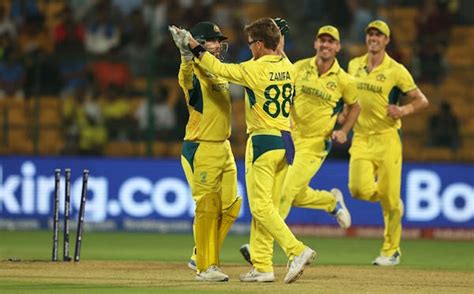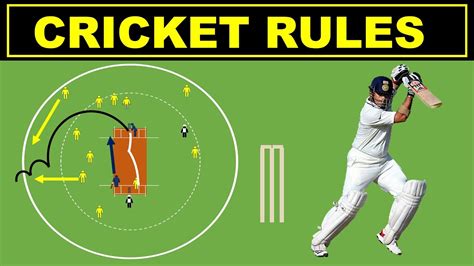Explore the evolution of cricket tactics, key innovations, player specialization, and future trends that have shaped and will continue to influence the game.Cricket, often referred to as a game of subtle nuances, has undergone a remarkable transformation over the decades, reflecting shifts in tactics, player specialization, and technological advancements. This article delves into the fascinating evolution of cricket strategies, tracing their roots from the early days of the sport to the dynamic tactics employed today. We will explore the significant innovations that have reshaped the game, highlight pivotal matches that have altered the landscape of cricket strategies, and examine how player roles have evolved in response to these changes. Additionally, we’ll speculate on future trends that could further influence the art of cricket. Join us on this journey through time as we uncover the intricate tapestry of cricket tactics and their lasting impact on the game we love.
Understanding Early Cricket Strategies and Their Influence
The early years of cricket were characterized by a more simplistic approach to gameplay, which laid the groundwork for the future evolution of cricket tactics. Initially, cricket was played primarily for entertainment, with little formalization in strategy or structure. Matches were often informal and driven by local customs rather than established rules.
One of the foundational strategies in early cricket was the use of tactics dictated by the condition of the pitch and the weather. Players learned to adjust their gameplay based on varying degrees of moisture and dryness, seeking to exploit the surface for seam movement or turn. This adaptability highlighted a fundamental aspect of cricket: the significance of the environment on strategy.
In terms of batting, players emphasized a defensive style of play, primarily focusing on survival rather than aggression. Early cricket batsmen often prioritized leaving balls outside off-stump and playing defensively, which later transitioned to more aggressive batting approaches as the game evolved. This shift can be seen as the precursor to modern tactics that favor runs scored per ball.
The bowling strategies of the time were equally simplistic but effective. Fast bowlers were rare, and most bowlers were medium-pacers or spinners whose aim was containment rather than taking wickets. The introduction of spin bowling opened new avenues, allowing captains to utilize their bowlers in unexpected ways, thereby influencing tactical decisions in match scenarios.
Furthermore, the early use of field placements showed the beginning of strategic thought in cricket. Captains began recognizing the value of setting fields to choke runs or create pressure on batsmen. This was a crucial early insight that shaped the tactical evolution of the game, guiding players to think beyond mere ball possession and explore the dynamics of attack and defense.
Understanding these early cricket strategies provides insight into how they have significantly influenced the evolution of cricket tactics over the decades. They set the stage for the intricate strategies we see in modern cricket today, where advanced analytics and player specialization have taken these foundational ideas to new heights.
Key Innovations That Shaped Modern Cricket Tactics
The evolution of cricket tactics has been significantly influenced by several key innovations that have changed how the game is played and strategized. These innovations can be categorized into three main areas: equipment advancements, game format changes, and analytical tools.
| Innovation | Description | Impact on Tactics |
|---|---|---|
| Heavy Bats | Modern bats have become lighter yet stronger, allowing greater bat speed and power. | Encouraged aggressive batting strategies and high scoring rates. |
| Protective Gear | Improved helmets and body armor have increased player safety. | Empowered batsmen to play more freely, changing defensive tactics. |
| T20 Format | The introduction of Twenty20 cricket created a fast-paced format. | Shifted focus towards explosive batting and innovative bowling strategies. |
| Data Analytics | The use of software to analyze player performance and match situations. | Enhanced decision-making in real-time, leading to tailored tactics for each game. |
| Hawk-Eye Technology | A system used to track the trajectory of the ball. | Influenced umpiring decisions and tactical reviews for teams. |
Each of these innovations has contributed to the evolution of cricket tactics, pushing the boundaries of traditional strategies and fostering new ways of thinking about the game. As technology continues to advance, it is likely that we will see even more dramatic changes in how cricket is played and understood.
The Impact of Technology on the Evolution of Cricket Tactics
Technology has revolutionized many sports, and cricket is no exception. The evolution of cricket tactics has been significantly influenced by advancements in technology, offering teams an edge that was previously unimaginable. From the introduction of video analysis to the use of data analytics, the game has transformed in how strategies are devised and executed.
One of the primary changes has been the introduction of Hawk-Eye technology, which allows players and coaches to visualize ball trajectories and make informed decisions based on accurate data. This technology has not only aided in understanding the nuances of bowling and batting but also in making real-time decisions during matches.
The rise of analytics in cricket has ushered in a new era where teams analyze player performance through detailed statistics and metrics. By utilizing data-driven insights, coaches can devise customized tactics tailored to exploit opponent weaknesses, leading to smarter game plans. For example, identifying a bowler’s strengths and weaknesses allows captains to make informed decisions about field placements and bowling changes.
Additionally, the advent of wearable technology has enabled players to monitor their fitness levels, enabling them to optimize their training regimens. This has a direct impact on strategies, as fitter players can perform better in high-pressure situations during matches.
Furthermore, the proliferation of social media and cricket analysis platforms has ensured that teams and players have access to a wealth of information about opponents, past matches, and emerging trends. This continuous influx of data helps cricket teams adapt and refine their tactical approaches, ensuring they stay competitive in an ever-changing environment.
The evolution of cricket tactics has been heavily influenced by technology, forever changing how teams prepare for and compete in matches. As technology continues to advance, it will be intriguing to see how innovative tactics emerge and the new heights they will take this beloved sport.
Analyzing Famous Matches That Redefined Cricket Strategies
Throughout the history of cricket, certain matches have not only delighted fans but also significantly influenced the evolution of cricket tactics. These games often showcased innovative strategies that redefined team approaches and set new standards for future generations.
One such match was the 1983 Cricket World Cup final, where India faced the West Indies. India’s unexpected victory through disciplined bowling and strategic batting techniques demonstrated the importance of adaptability in challenging conditions. The Indian team’s strategy of focusing on building partnerships and rotating the strike was pivotal in a match that previously seemed dominated by the West Indies’ powerful batting lineup.
Another landmark match occurred during the 2005 Ashes series between England and Australia. England’s aggressive bowling strategy, particularly from players like Andrew Flintoff, was groundbreaking. They utilized a relentless pace and swung deliveries to take crucial wickets, marking a shift from defensive to more aggressive tactics that encouraged teams to be bolder in their approach.
In 2019, the ICC Cricket World Cup semi-final between New Zealand and England is noteworthy for its dramatic finish, particularly with the Super Over rule coming into play. This match highlighted the significance of scoring quickly and deploying special tactics in high-pressure situations, greatly influencing teams’ strategies in the limited-overs format.
These matches serve as crucial case studies in the evolution of cricket tactics, illustrating how teams have learned from one another and adapted their gameplay in response to the challenges presented by opponents and changing formats. Analyzing these historical games offers rich insights into the dynamic strategies that continue to shape the sport.
How Player Specialization Influenced the Evolution of Cricket Tactics
As cricket has matured over the years, one notable transformation is the specialization of players in specific roles. This emphasis on individual skills has significantly impacted the evolution of cricket tactics throughout the decades. Initially, the game featured versatile players who could perform multiple roles; however, the modern game now often showcases specialists like openers, middle-order batsmen, finishers, fast bowlers, and spinners.
Specialization allows teams to develop tailored strategies that optimize performance across various match situations. For instance, the introduction of power hitters at the end of limited-overs games has led teams to adopt more aggressive batting tactics, shifting the focus from traditional accumulative scoring to explosive, high-risk play. This approach not only changes how teams approach their innings but also influences bowling strategies, as teams need to defend against hard-hitting specialists.
Moreover, the rise of spinner specialists has altered tactics in Test cricket, prompting teams to rotate their bowlers more strategically to exploit pitch conditions. According to historical data, teams are increasingly leveraging these specialists to create match-winning opportunities by setting specific fields and employing tailored bowling strategies designed to capitalize on a batsman’s weaknesses.
As the game evolves, the unique skills of specialized players enhance the tactical depth of cricket, making it a dynamic sport. The deliberate focus on specialization emphasizes the continuous evolution of cricket tactics, with teams always looking for innovative ways to adapt their play based on the strengths and weaknesses of their squads.
Future Trends in the Evolution of Cricket Tactics to Watch
As cricket continues to evolve, various emerging trends are set to shape the evolution of cricket tactics in the coming years. Here are some key areas to look out for:
- Data Analytics: The use of advanced analytics will likely become even more prevalent. Teams are relying heavily on data to inform their strategic decisions, from player selection to match tactics. This trend will ensure that teams are not only reacting to the game but also anticipating their opponents’ moves.
- Player Fitness and Training: The integration of sports science into training regimes will influence player performance significantly. Expect to see tactics that capitalize on enhanced fitness levels, allowing players to maintain their efficiency over longer periods.
- Influence of T20 Cricket: The fast-paced format of T20 is likely to seep into traditional formats. The need for aggressive batting and innovative bowling techniques will challenge teams to adapt and optimize their strategies accordingly.
- Increased Role of Data-Driven Coaching: Coaches who specialize in data analysis will play a crucial role in shaping tactical decisions. A greater emphasis on in-depth statistical understanding will enable teams to devise more effective strategies during matches.
- Globalization of the Game: As cricket continues to grow internationally, influences from various playing styles around the world will contribute to the evolution of cricket tactics. Players from diverse backgrounds bring unique approaches, enriching the tactical landscape of the game.
- Technological Advancements: Innovations such as virtual reality for training, automated video analysis, and enhanced real-time feedback will become integral to strategic development, allowing players and coaches to refine their tactics and adapt during matches.
The evolution of cricket tactics is set to be shaped by technological advancements, data analytics, and the influence of T20 cricket. As these trends continue to develop, watching how teams adapt and innovate will be essential for the future of the game.
Frequently Asked Questions
What are the key factors that influenced the evolution of cricket tactics over the decades?
Key factors include changes in rules, advancements in technology, player fitness and specialization, and the influence of different cricketing cultures.
How did the introduction of limited-overs cricket change tactical approaches?
Limited-overs cricket introduced a more aggressive batting style, prioritized run-scoring over traditional defensive techniques, and led to new roles such as power hitters and all-rounders.
What role has technology played in shaping modern cricket tactics?
Technology such as data analytics, video replays, and ball-tracking systems has allowed teams to analyze player performances and opponent strategies, leading to more informed tactical decisions.
How have bowling tactics evolved in response to changing batting styles?
Bowlers have adapted by developing variations in pace and spin, implementing aggressive field placements, and focusing on specialized roles like death bowlers and opening bowlers.
What significant changes in fielding tactics can be observed over the decades?
Fielding tactics have evolved from traditional setups to more dynamic approaches, including aggressive slips, positions tailored to batsmen’s weaknesses, and the introduction of a ‘ring fielding’ in limited-overs formats.
Can you highlight any particular series or matches that contributed to tactical evolutions in cricket?
The famous 1983 World Cup final, where India defeated the West Indies, showcased the effectiveness of a disciplined bowling attack against strong batting, influencing future tactics in international cricket.
What trends can we expect to see in the future of cricket tactics?
Future trends may include further specialization of player roles, enhanced use of data analytics for real-time strategy adjustments, and innovations in training methods to adapt to the increasing pace of the game.









